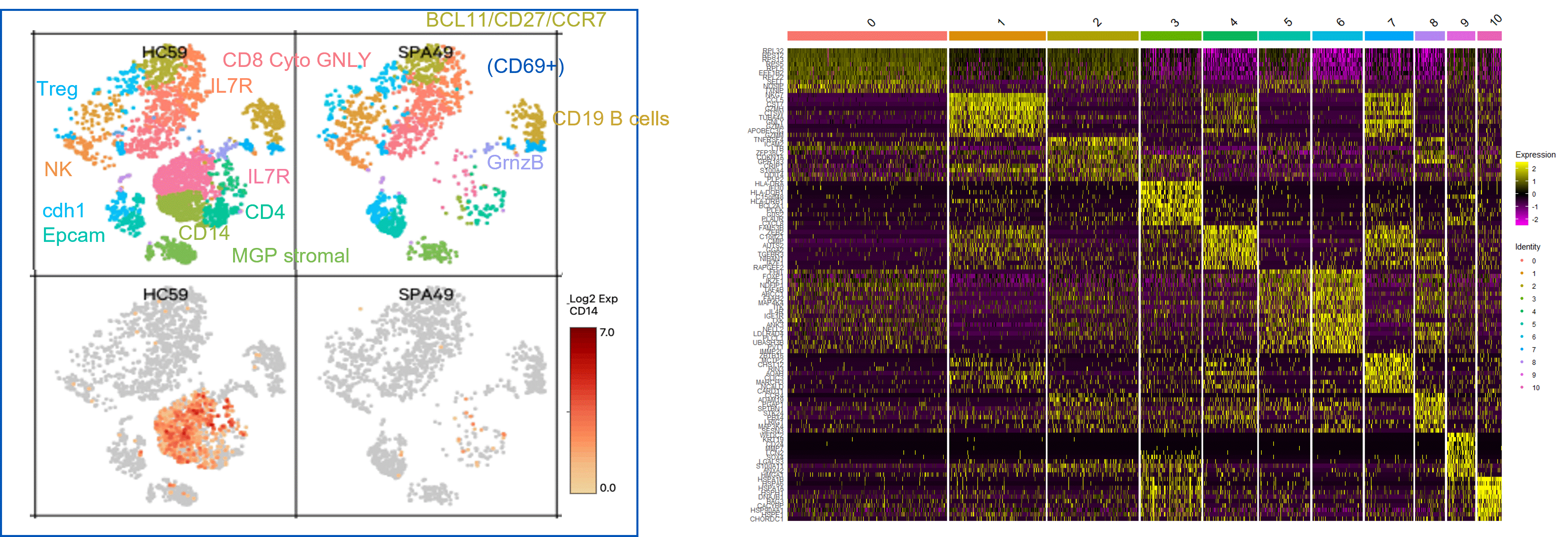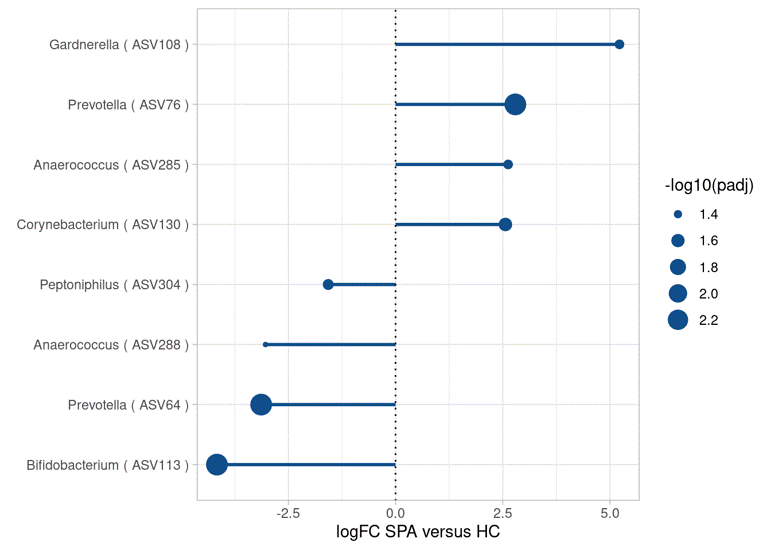Session Information
Session Type: Abstract Session
Session Time: 3:00PM-4:30PM
Background/Purpose: Numerous studies exploring gender differences in axial spondyloarthritis (AxSpA) have noted that women exhibit distinct disease manifestations. Yet, a definitive pathophysiological distinction of these diverse immune responses remains elusive thus far, necessitating an investigation into sex-specific pathogenesis. The female genital immune system, a plausible pathogenetic candidate, remains underexplored in AxSpA research. Recent animal models’ data suggest a potential interplay between the uterus and joints. This study aims to investigate a uterine-joint axis in female AxSpA patients, exploring the role of genital tract dysbiosis and subclinical uterine inflammation in disease pathogenesis and elucidating sex differences in AxSpA development.
Methods: Vaginal, cervical, and uterine swabs were collected from 25 premenopausal, newly diagnosed AxSpA patients and 25 age-matched healthy controls (HC). The microbial composition was analyzed using 16S rRNA sequencing. The presence of genital inflammation was investigated in two arthritis models, SKG by histological assessments, flow cytometry and bulk RNAseq. The inflammation and immunological response in human AxSpA uterine tissue was investigated by performing single-cell RNA sequencing on menstrual blood samples from AxSpA patients (n=3) and HC (n=3). This approach mirrors the cellular and immunological composition of uterine tissue.
Results: Microbiota analysis at vaginal, cervical, and uterine levels revealed distinct clustering of patients and controls, indicating different microbiota compositions. This study revealed significant genital dysbiosis in AxSpA patients, marked by reduced lactobacilli and increased, among others, Gardnerella vaginalis (83% in AxSpA vs. 16% in HC; p < 0.001). Figure 1.
In SKG genital inflammation was notably more pronounced at 1 week post-curdlan, with inflammatory infiltrates, microabscesses, and squamous metaplasia (p < 0.001). Bulk RNA sequencing identified specific gene clusters differentiating curdlan-treated mice from controls, revealing upregulated inflammatory pathways. Flow cytometric analysis of SKG genital tract tissues post-curdlan showed a trend towards reduced monocyte/macrophage populations. Additionally, cervix weight and T-cell infiltration were increased in SKG mice compared to BALB/c mice.
Single-cell RNA sequencing of menstrual blood from AxSpA patients revealed a strong imbalance of monocytes and IL7R+ cells compared to HCs (Figure 2), alongside significant differential gene expression. The reduction in genital monocyte observed in human SpA and recapitulated in animal models may successful the egression and migration of these cells from the genital tract.
Conclusion: This study demonstrates genital tract dysbiosis and distinct immune cell profiles in female AxSpA patients for the first time, revealing a potential uterine-joint axis involved in the disease’s pathogenesis. This multimodal genomic and molecular approach provides new insights into the cervicovaginal microbiota, immune landscape, and AxSpA, emphasizing the need for further exploration of sex differences in rheumatic diseases.
To cite this abstract in AMA style:
Mauro D, Vecellio M, Bergot A, Schmid E, Forte G, Stingo A, Salzillo A, Pastore A, Aretini P, Di Lorenzo F, ciancio A, Pantano I, Saccone G, Zullo F, Montecucco c, Rizzo A, Schett G, Thomas R, Zaiss M, Ciccia F. Unveiling the Uterine-Joint Axis: Dysbiosis and Subclinical Uterine Inflammation in Female Axial Spondyloarthritis Pathogenesis [abstract]. Arthritis Rheumatol. 2024; 76 (suppl 9). https://acrabstracts.org/abstract/unveiling-the-uterine-joint-axis-dysbiosis-and-subclinical-uterine-inflammation-in-female-axial-spondyloarthritis-pathogenesis/. Accessed .« Back to ACR Convergence 2024
ACR Meeting Abstracts - https://acrabstracts.org/abstract/unveiling-the-uterine-joint-axis-dysbiosis-and-subclinical-uterine-inflammation-in-female-axial-spondyloarthritis-pathogenesis/


